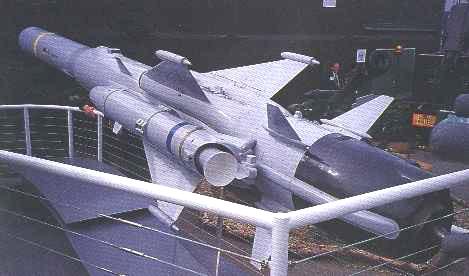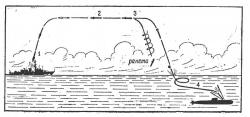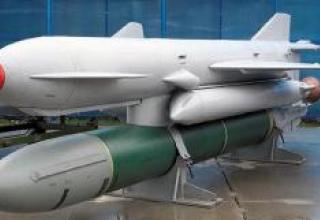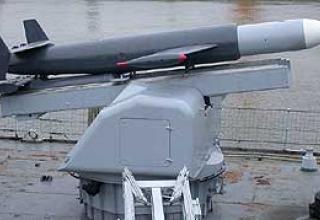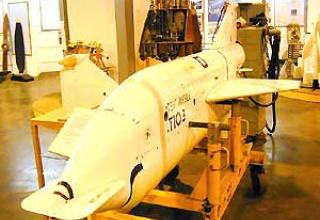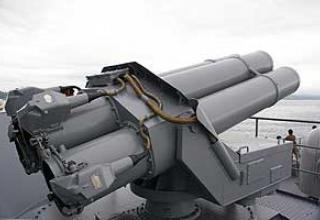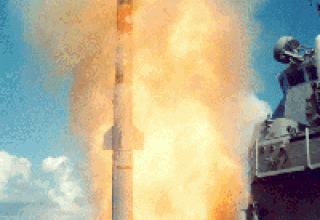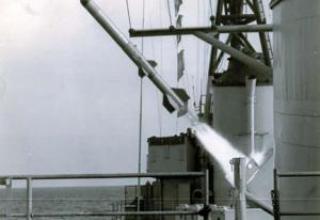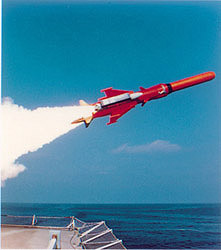
The Milas anti-submarine system (Missile de Lutte-Anti Sousmarine) was developed by Matra Bae Dynamics (France) and Alenia Difesa (Italy) on the basis of the Otomat anti-ship missile system.
The French-Italian torpedo MU-90 "Impact" (mass about 290 kg, range 10 km, speed 50 knots) or A-290 (mass 270 kg, speed 50 knots) is used as a combat unit.
At present, the company "GIE MILAS" is working on the use of the torpedo Mk46 (USA) in the complex, which is in service with the fleets of 24 countries, which significantly expands the range of potential buyers of the complex. In October 1997, "Raytheon" invested 1.7 million dollars in this project.
In April 1998, France refused to participate further in the development and procurement of this anti-submarine system.
Composition:
The anti-submarine complex "Milas" includes:
- rockets placed in container-type launchers,
- the missile firing control system,
- technical control system,
- missile launch preparation devices.
Information from shipboard systems: ship's GAS, gyrocompass and hyrovertical, anemometer and lag is used in preparation of initial data for firing. The firing control system also has an information connection with the ship's automated combat control system.
The missile (see layout chart) is made according to the normal aerodynamic scheme, has a cylindrical hull with a folding cross-shaped boom wing and four boom-shaped aerodynamic rudders. The vertical pair of steering wheels is used to control the angle of yaw, horizontal - on the corners of the roll and pitch. Structurally, the missile consists of a propulsion system, an onboard control system and a combat unit.
The rocket propulsion system is a turbojet marching engine from the Otomat rocket and two solid propellant launch accelerators, which are separated from the rocket after combustion. To supply air to the turbojet engine, there are four air intakes located on the missile body in its middle part in the same planes as the wing arms. The aft compartment with a marshal engine and on-board control system equipment is connected to the anti-submarine torpedo adapter.
The on-board control system includes an inertial system, a radio altimeter and a remote control system. The inertial system and altimeter provide guidance and flight control to bring the SSBN into the area where a submarine target is likely to be located according to a program that is generated and entered into the on-board system by the ship's missile control system before launch.
The same standard equipment is used to launch this missile as for Otomat anti-ship missiles. The missile is launched from a transport and launch container using launch accelerators. The cruising flight at M=0.9 is provided by a turbojet engine and takes place at an altitude of 200m. The inertial guidance system allows the missile to rotate in the firing plane from +200° to -200°, which practically does not limit the maneuver of the carrier ship at the time of launch. The remote control system allows for correction of the flight path in accordance with new data on the target location both from the firing ship and from a remote control point (helicopter or other ship).
The PLUR engine operates for a certain period of time corresponding to a given firing range. At the design point, the engine stops working and the engine is separated, the aerodynamic fairing of the combat unit is reset and the brake parachute is opened, which ensures the safe drive of the torpedo into the water. The parachute reduces the torpedo drop speed to 50 m/s. After entering the water, the propulsion system is activated, the torpedo plunges to a specified depth and starts searching for a target. When detected, the motion of the torpedo is controlled by the homing system.
Characteristics:
| Range maximum, km | 100 (other data 60) |
| Effective range, km | 55-65 |
| Range minimum, km | 5 |
| Rocket body diameter, m | 0.46 |
| The length of the rocket, m | 6.0 |
| Wingspan, m | 1.35 |
| Number of steps | 1 |
| Flight Speed, m/sec. | 270 |
| Maximum height of trajectory, m | 230 |
| Launch preparation time, s | 20 |
| Launch weight of the rocket with a torpedo,kg | 800 |
| Weight of transport and start-up container, kg | 1000 |
| Length of container, m | 6.1 |
Testing:
Of the more than 50,000 launches of Milan missiles (training and combat missiles) carried out in various conditions, 92% ended in a direct hit. The effectiveness of the complex was demonstrated in combat conditions: Iraq since 1980, Syria and Great Britain in 1982, French troops in Lebanon in 1984, Chad in early 1987. With nine PU units of the Chadian land forces hit more than 100 tanks and other vehicles in Libya, using about 250 missiles "Milan-2".
Sources:
- К.Сергеев "Противолодочные ракетные комплексы" , Зарубежное военное обозрение N7, 1989 год
- С.Лейко "Перспективный противолодочный ракетный комплекс "Милас"" , Морской сборник N2, 1992 год
